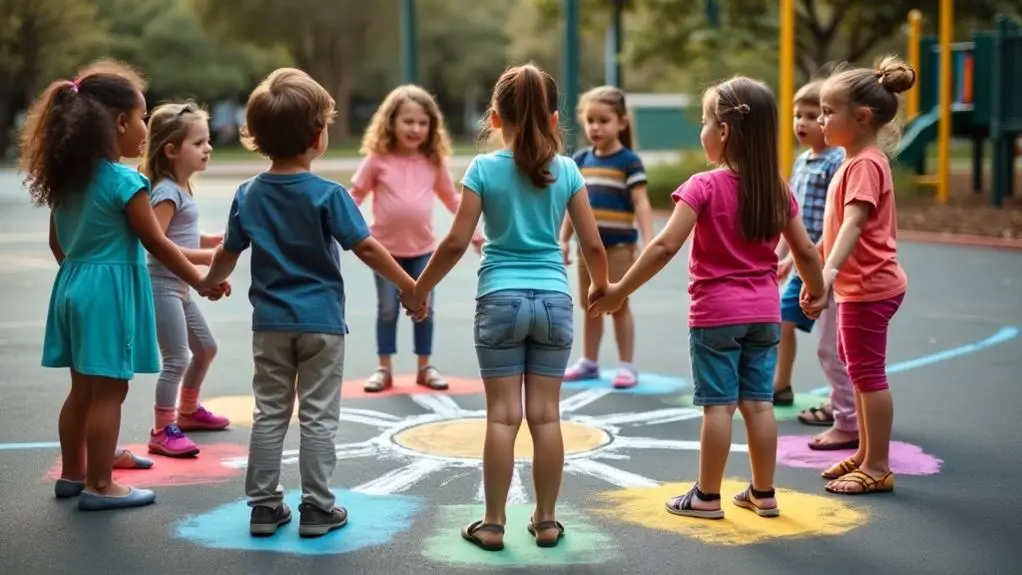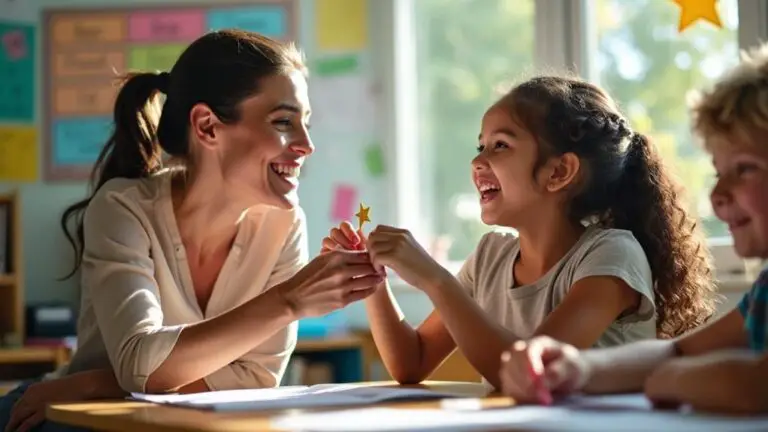Teaching Kids About Boundaries
As a parent and educator, I've seen firsthand how essential it is to teach children about boundaries. I've witnessed the positive impact it has on their social interactions and self-confidence. When kids understand personal space and learn to communicate their comfort levels, they're better equipped to navigate complex relationships. But it's not just about setting their own boundaries; it's equally important for them to respect others'. This dual understanding fosters empathy and mutual respect. The question is, how do we effectively instill these concepts in young minds? There's a powerful technique I've found that makes all the difference…
Key Takeaways
- Explain personal space and its importance in social interactions through age-appropriate examples and role-playing.
- Teach children to recognize and communicate their comfort levels using specific phrases and body language.
- Encourage respect for others' boundaries by fostering empathy and teaching consent in interactions.
- Empower self-advocacy skills through continuous discussions and modeling of assertive communication.
- Use role-playing scenarios to practice setting boundaries and responding appropriately to others' boundaries.
Understanding Personal Space
While personal space may seem like an abstract concept, it's essential for children to understand its importance in social interactions.
I've found that teaching kids about boundaries and personal space helps them develop important social skills. Children learn to respect others' comfort zones and express their own feelings when they're uncomfortable.
I encourage parents to help their kids communicate their preferences for greetings and physical contact. This teaches them to set boundaries and respect those of others.
Role-playing scenarios are an effective way for children to practice recognizing and managing personal space in various situations. By engaging in these exercises, they can learn to identify when someone might need more distance or when they themselves feel crowded.
Ultimately, understanding personal space fosters empathy and helps children build stronger, more respectful relationships with their peers and adults.
Communicating Comfort and Discomfort
Comfort communication is an essential skill for children to develop when learning about boundaries. I believe it's vital to encourage kids to express their feelings about comfort and discomfort openly. By validating their emotions, we reinforce their right to set personal boundaries and prevent future issues.
Teaching children specific phrases like "I don't like that" or "Please stop" empowers them to assert their boundaries effectively.
I've found that role-playing scenarios where kids practice communicating discomfort can enhance their confidence in real-life situations.
As parents, we can model open communication about comfort and boundaries in our own interactions. This approach demonstrates the importance of discussing feelings and respecting others' limits.
Respecting Others' Boundaries

In addition to understanding their own boundaries, children must learn to recognize and respect the boundaries of others. Teaching children to respect other people's boundaries fosters empathy and promotes healthy social interactions.
I believe it's essential to help kids listen attentively to verbal and non-verbal cues from peers, as this helps them interpret and respect others' personal space and emotional limits.
To effectively teach children about respecting boundaries, I recommend:
- Emphasizing the importance of consent in interactions
- Encouraging kids to express their own boundaries while respecting others'
- Using role-playing scenarios to practice appropriate responses
Empowering Self-Advocacy Skills
Empowering children with self-advocacy skills is essential for their personal development and safety. I've found that role-playing scenarios help teach your child to set boundaries and express their feelings effectively. By encouraging kids to articulate their comfort levels, we're preparing them to handle peer pressure situations confidently.
Here's a helpful table to guide your efforts:
| Self-Advocacy Skills | How to Teach |
|---|---|
| Assertive communication | Model in adult interactions |
| Identifying boundaries | Create list of situations |
| Expressing feelings | Continuous discussions |
| Seeking help | Reinforce importance of safety |
I've noticed that children who practice these skills develop a strong sense of self-awareness. By modeling assertive communication and boundary-setting behaviors, we allow children to learn by example. This approach helps children identify when their boundaries are being crossed and empowers them to advocate for their needs while respecting others.
Conclusion
I've found that teaching kids about boundaries is an ongoing process that requires patience and practice. By focusing on personal space, communication, respect, and self-advocacy, I'm laying the groundwork for healthier relationships in their future. As I guide them through role-playing exercises and real-life situations, I'm amazed at how quickly they grasp these concepts. It's rewarding to see them grow more confident in asserting their own boundaries and respecting those of others.







